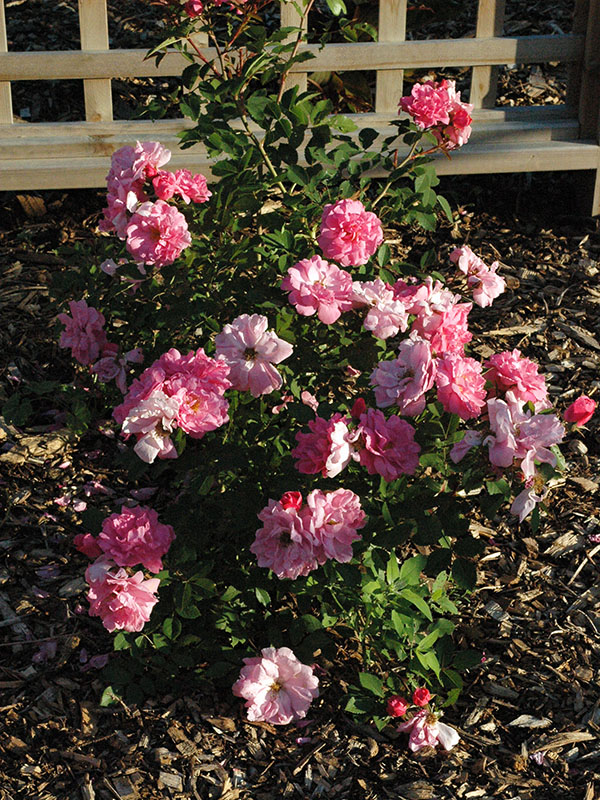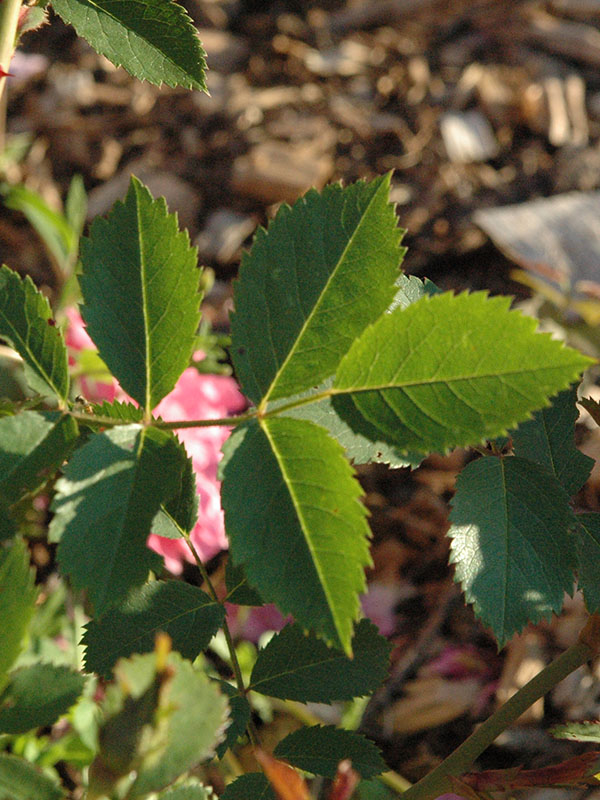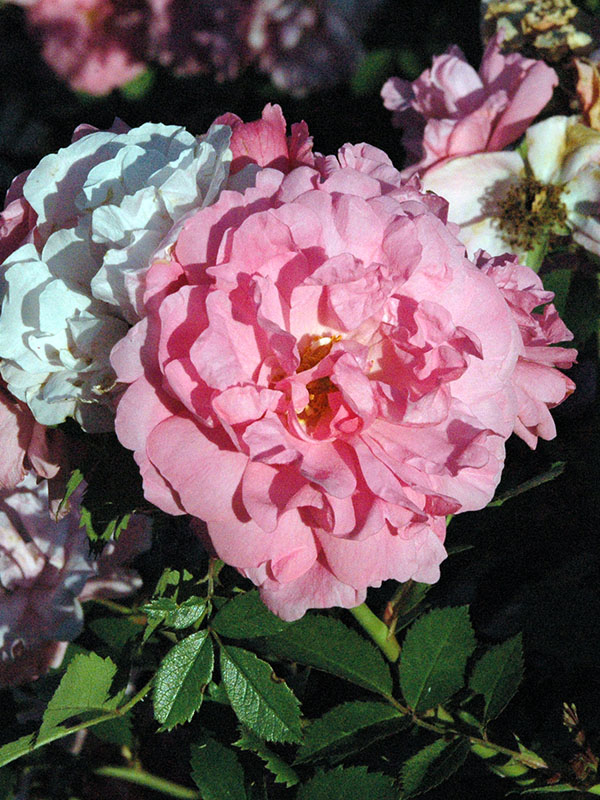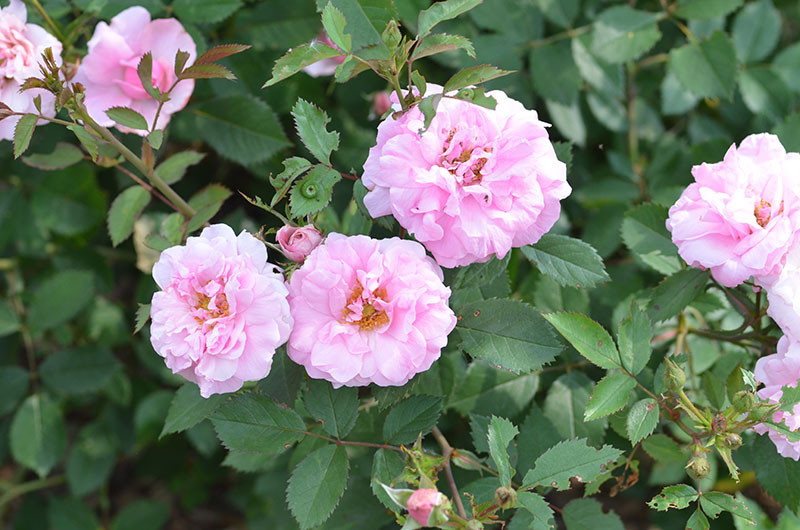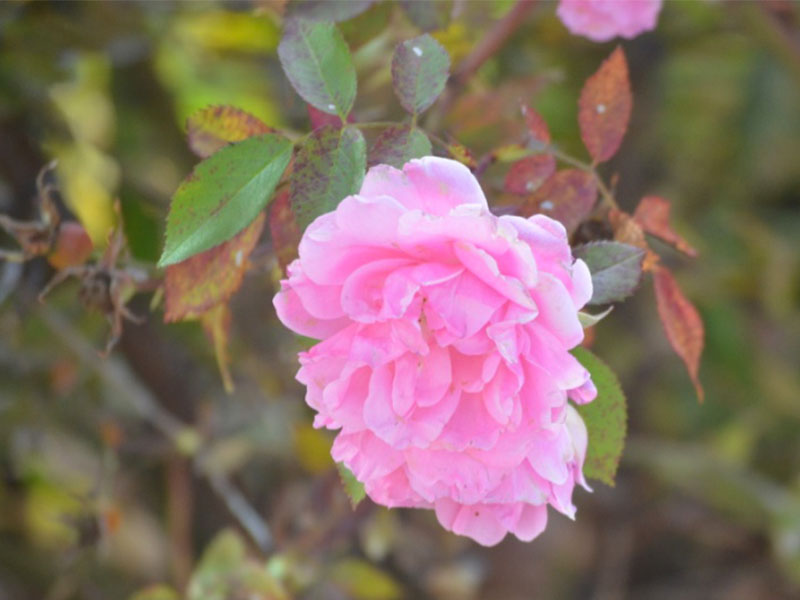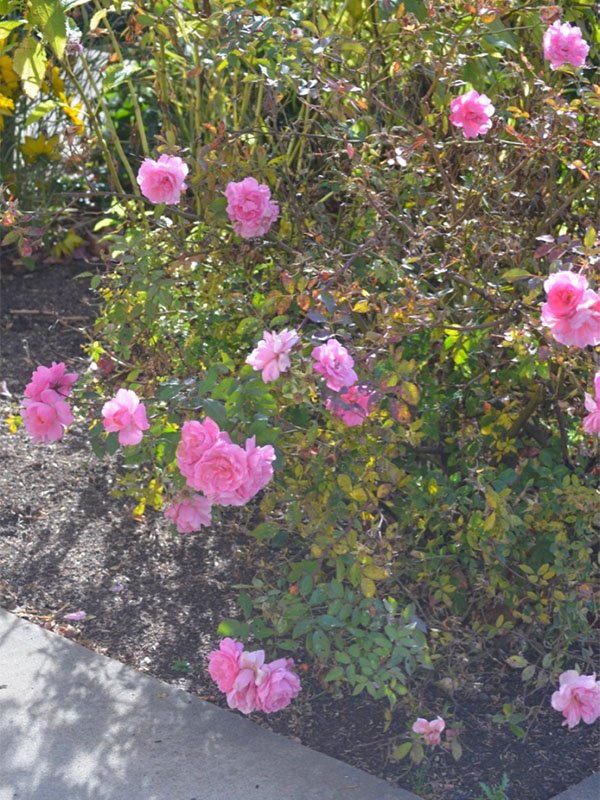| Shape | Compact-rounded spreading. |
| Landscape | Borders, hedges, climbers, rock garden, flower beds, containers, cut flowers, can accommodate almost any garden need. |
| Cultivation | Grow in full sun in moist but well-drained soil. Suckers should be removed annually. |
| Pests | Aphids, leafhoppers, spider mites, scale insects, caterpillars, mildew, dieback, canker, viruses, rust and rose slugs. Somewhat resistant to blackspot and powdery mildew. |
| Notable Specimens | The Devonian Botanic Garden, Devon, Alberta, Canada.
The Ottawa Experimental Farm, Ottawa, Ontario, Canada.
The A.M. Cuddy Gardens, Strathroy, Ontario, Canada.
Olds College, Olds, Alberta, Canada. |
| Habitat | Horticultural origin. |
| Bark/Stem Description | Smooth, semi-glossy robust woody stems with small characteristic rose spines/thorns. |
| Leaf Description | Semi-glossy, highly serrated, elliptic-pinnate leaves. |
| Flower Description | Up to 17 8 - 9 cm medium pink flowers per cluster with an average of 40 petals per bloom. Often quartered, similar in form to many old-fashioned roses. |
| Colour Description | Showy rosy pink to dark pink blooms, medium green foliage, showy reddish-orange rosehip fruits and brownish-green bark with reddish-brown spines/thorns. |
| Texture Description | Medium to spiny. |
